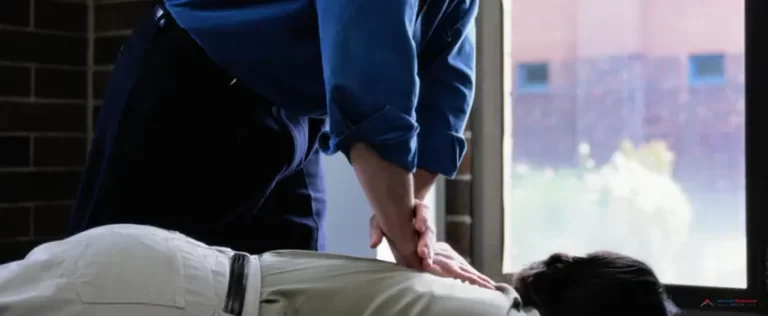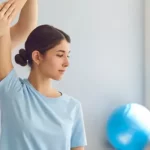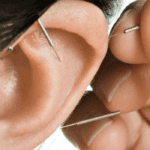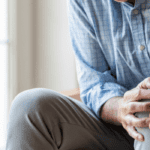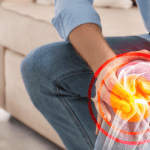Uneven hips or lateral pelvic tilt is the phenomenon when one side of the pelvis or hip is tilting at a higher angle than the other. This brings pain and difficulty in mobility, and more often than not, it is a telltale sign of scoliosis. There are exercises to manage lateral pelvic tilt even without having to go to the doctor. In this article, you’ll learn about the best exercises for uneven hips.
However, if the pain becomes more serious, it is important to get yourself checked for scoliosis. As mentioned, uneven hips can be the first sign that you might be dealing with this condition. The pain that comes with scoliosis and lateral pelvic tilt comes in three categories: mild, moderate, and severe.
Mild scoliosis is also responsible for uneven hips. In adulthood, mild scoliosis is often common. However, unlike mild scoliosis in adolescents, the pain felt by adults with mild scoliosis becomes intense. This is most likely caused by the spinal cord being compressed due to the lack of vertical growth in adults. This compression is what causes the pain that can be felt in the back, the neck, and the hips.
There are many ways to tell if you are suffering from scoliosis; the most common procedure is to get an X-ray. Another procedure is called the Cobb angle, and this is mostly used in measuring the severity of the scoliosis case.
Cobb Angle and Other Procedures to Know if You Have Uneven Hips
Before we get through the best exercises for uneven hips, it is important to know when to do home remedies and when to consult the doctor. There are a variety of procedures that chiropractors and doctors do to determine whether or not a patient is suffering from lateral pelvic tilt.
As aforementioned, an X-Ray is the primary way of knowing whether lateral pelvic tilt persists or if it is a telltale sign of scoliosis. If you suspect that you have lateral pelvic tilt, you can try these non-invasive methods:
Cobb Angle Method
If you want a professional to confirm whether or not you have lateral pelvic tilt, the common procedure that doctors do is the Cobb angle.
The Cobb angle measurement, as previously discussed, is used primarily to gauge the severity of scoliosis. The Cobb angle is taken by drawing lines from the topmost and the bottom part of the tilted spinal bones. When the angle registers between 10 and 25 degrees, you have mild scoliosis. However, if the measurement registers between 25 to 40 degrees, the scoliosis is moderate. Anything greater than 40 degrees is severe scoliosis.
Trendelenberg Method
Another method used is the Trendelenberg method, where you place your hand on the highest point of your waist and stand on one leg for 10 seconds. During this time, try to do a single leg squat and see if you can observe a tilt on your hips.
A word of caution: the Trendelenberg method does not guarantee that the same tilt will be observed in the natural standing position.
If you suspect and want to confirm that you have lateral pelvic tilt before consulting a medical professional, do this simple procedure:
- Stand in front of a full-length mirror with your feet apart. The distance between the two feet should be the same as your shoulder width.
- Position your hands in front of your hips. This will help give an idea of the angle of the hips.
- Hold a string between your two hands. The string should be parallel to the width of the feet. If the string has a higher elevation on either side, then you have a lateral pelvic tilt.
In a normal situation, the hip or the pelvis should be parallel to the shoulders and to the ground and not tilted in any direction. If you are experiencing lateral pelvic tilt, you will also exhibit the following symptoms:
- Mild backache
- Pain around the hips and buttocks area
- Pain in the lower back area after standing for some time
- Unbalanced walking pattern
Common Causes of Lateral Pelvic Tilt
Uneven hips or lateral tilt is a sign that there is an anomaly in the muscular and skeletal system. However, in most cases, lateral pelvic tilt can be easily fixed. There are three common causes of lateral pelvic tilt, and it is important to identify them if you want to avoid further complications.
- Scoliosis – Although the causes of scoliosis vary, adult scoliosis is often associated with age and degeneration or muscle-related diseases like arthritis. There are cases where scoliosis in adults is only discovered later in life, even though it already existed during their childhood or adolescence.
- Differences in Leg Length – This is highly due to posture or regular standing position. When a person spends the majority of their time standing on one leg, eventually, the hips will develop into a tilt.
- Structural Length Discrepancy – Sometimes, this case is congenital and can be studied by doctors fully once the bone of the leg stops growing (upon reaching adulthood). Although it can be quite difficult to treat this particular case, doctors offer treatment depending on how huge the length discrepancy is between both legs.
Exercises to Help Uneven Hips
Uneven hips can be solved mostly through physical therapy. Gyms and clinics offer their physical therapy services to cater to adults and young professionals who experience frequent muscle pain, but you don’t have to go far for uneven hips exercises, all you need is yourself and some of these moves. Learn how to fix uneven hips without spending money and at your own comfort. Here are the best exercises for uneven hips that you can easily do at home in your free time:
Reverse Leg Raises
For this particular exercise, the focus will be on the gluteal muscles or the glutes and improve mobility. If you are new to the terminology, the glutes are a group of muscles in the butt region and are composed of three muscles: the gluteus maximus, gluteus medius, and gluteus minimus.
In these uneven hips exercises, all you need to do is lie on your stomach with your legs on the ground and your head resting on your arms. Lift one leg as high as you comfortably can while maintaining a straight knee. Make sure that the other leg stays firm and straight on the ground. Do 12 repetitions of this process and shift by raising the other leg for another 12 repetitions.
Reverse Standing Leg Raises
The objective of this particular exercise on how to fix uneven hips is to improve balance and enrich the gluteus muscles. Begin by holding onto a wall or a chair for balance. Hold your body straight, tighten your abdominal muscles, and start raising each leg.
Lift your leg behind you as high as you comfortably can and repeat the process 12 times. Proceed with the other leg. Ensure that both legs are straight and firm when doing these raises to challenge the right muscles.
Hip Hike
Unlike the first two best exercises for uneven hips, the objective of this particular exercise is to improve hip and core strength as well as improve the alignment of the pelvis. The focus of this exercise is on the hip muscles directly.
Start the exercise by finding a small box that is sturdy enough for you to step on. If you have stairs in your house, you can do it there, too. Stand sideways on the box using the higher leg and lift the other leg as high as you can. Make sure that the spine remains straight. Hold for 5 to 10 seconds, and repeat the process 5 to 10 times.
Clamshell
This exercise on how to fix uneven hips strengthens the gluteus muscles and improves mobility. Start the exercise by lying on your side. Bend both of your legs at a 90-degree angle and support your head with your bottom arm. Roll your top hip slightly forward and ensure that your spine is stable and relaxed.
Start lifting your top knee while making sure that your feet are intact. Hold the position for 5 seconds, and then lower your knee. Repeat this process 12 times and shift sides.
Hip Adduction
Strengthening the adductor muscles – the muscles of the hip – is the primary objective of these uneven hips exercises. Begin by lying on one side and stretching both legs. Follow through by crossing the top leg over the bottom leg, just right in front of the bottom leg’s knees.
Make sure that the bottom leg stays straight as you lift it off the ground as high as you comfortably can and hold for 5 seconds. Repeat this step 12 times and switch sides.
How Can Chiropractic Help Uneven Hips
Now you know the best exercises for uneven hips, it is time for the big guns. Sometimes the cases of uneven legs are extreme that exercise can’t simply resolve the problem. Physical therapy has always been the primary way to treat lateral pelvis tilt and other muscular and skeletal ailments caused by scoliosis.
Chiropractic Massages
Chiropractic massages deal with mechanical disorders that are directly aimed at the muscular and skeletal systems. For uneven hips, chiropractic therapy is one of the best ways to resolve the problem. Unlike hip surgery, chiropractic therapy and exercises for uneven hips are non-invasive and relatively cheaper.
Chiropractors can help a patient with lateral pelvic tilt by repositioning the hips through different techniques that include mobilization therapy for a fast improvement in flexibility, strength, balance, and re-alignment. Soft tissue massages can also help in loosening the muscles around the hip area for added mobility.
Short Rehabilitation Process
The main advantage of seeking chiropractic treatment over traditional hip surgery is that the rehabilitation process is short. Hip surgeries are painful and, sometimes, cause more complications that can hinder the mobility of the patient further.
In the case of scoliosis and lateral pelvic tilt, continuous therapy is needed. With chiropractic therapy, soft tissue massages are included in the procedure to make sure that the other muscles are relaxed to minimize the pain and stress.
Chiropractic Treatment Saves Money
As previously mentioned, getting an uneven hips chiropractor can save you a lot of money compared to getting hip surgery. Chiropractors can help fix lateral pelvic tilt and remove the pain in the area, as well as give advice on how to avoid getting it again. Chiropractors can also assess the situation regarding your back and hips and can give ample warning if the scoliosis is getting worse.
Unlike the usual lumbar support therapy, uneven hips chiropractors give extra attention to every joint, muscle, and tissue structure in the area to ensure that the hips will go back to their former shape and to eradicate the pain that goes with the uneven hips. Chiropractors will focus on giving mobility therapies to patients who have extreme cases of lateral pelvic tilt. This will allow the tissues around the area to soften once again and allow the muscles to move smoothly.
If pain from uneven hips persists even though you are doing the best exercises for uneven hips regularly, it is best to call a chiropractor and have the affected area assessed.
Advanced Chiropractors Group Can Help With Your Exercises for Uneven Hips
If you are in need of Chiropractors in Vail, CO, Advanced Chiropractors Group can help connect you with the best uneven hips chiropractors in the area. To treat uneven hips, we offer digital X-rays along with chiropractic treatment as well as massage therapy. You can be 100% certain that the procedure will not be invasive and the results are satisfactory.
Our uneven hips chiropractors can also give advice regarding the best exercises for uneven hips that you can do at home without the need for equipment. Scoliosis treatment is also available depending on the intensity and the type of scoliosis the patient exhibits.
For sore muscles and other pain related to the muscular and skeletal systems, our chiropractors can offer Kinesio taping, foundation training, and dry needling services to loosen the muscles, maximizing stress relief.
Book an appointment with us now to learn more about exercises to help uneven hips!


